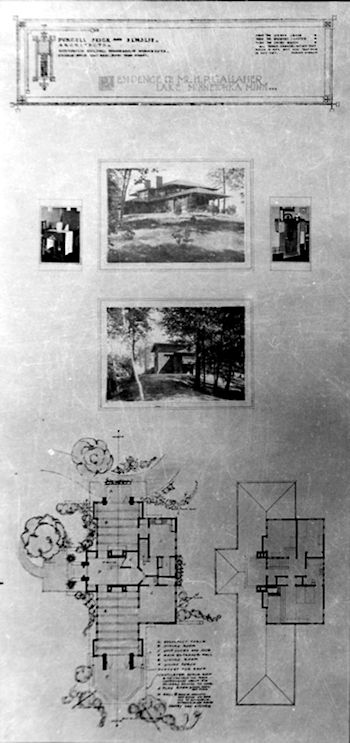
Panel for the H. P. Gallaher house
Second Cornell Exhibition
Purcell, Feick and Elmslie
1912
Source: UMedia Archive [PURL]
|
Organica
is undergoing major and final reconstruction, one last pass of these pages before I
leave them to whatever destiny may await their existence. I have spent over
twenty years on the work that manifests in the present site, starting with
the very first days of the Internet and the earliest form of HTML. Since these pages started accumulating in 1994, they are
not all exactly the same under the hood. There may be individual pages with
format problems for the next while due to code replacement issues.
Work is also underway to restore long missing database components that will
present an additional 2,100 pages. The Organica site is being be expanded
with other new and (to Caravan members potentially) exciting components, as well.
This rehabilitation and renewal project became necessary, unless I was
going to let the site degrade completely. There was no point in the monthly
expense of making these materials available without doing something, as the
code and resolution of the display images was becoming less and less
coherent with the inescapable ongoing changes in the underlying technology.
Part of this
includes a complete revision to introduce code that complies with current
web standards. The limitations of old HTML versions were glaringly evident,
and coding practices have moved on with both aesthetic and functional
possibilities. I am about 75% finished at this point with the introduction
of a Cascading Style Sheet (CSS) to allow the site to appear similar to the
competition boards created in the 1910s by Purcell and Elmslie to show their
work. I had wanted to do more, such as add side lines and other graces to
more fully invoke their design in this dynamic medium of the web, but that
would require more time than is available with all the other, more important
reconstructions needed. I may revisit this at the end, if possible, but for
now the semblance here will have to suffice.
File corruption had also occurred,
which is still in the process of being repaired. At some point, the files
were overwritten by a different operating system (on the web host, is all I
can think of, which is a Linux operating system and my work is on Windows) that replaced a variety of punctuation, like quotation marks,
apostrophes, and hyphen, with the same bit or gibberish []. The pages where this occurred were
among the oldest on the site. Merely copying the backup pages may not prevent the problem from happening
again. I will have to refer to the original materials, as well, to dissolve
away this obscuration.
So far, I have spent about 50 hours invoking tens of thousands of
code changes through global find and replace string searches. This
has accomplished a great deal with presenting a better look, but
does not address the problems with old images being too small, or
mishapen. That is going to take some thought and, of course, a lot
of time.
|

